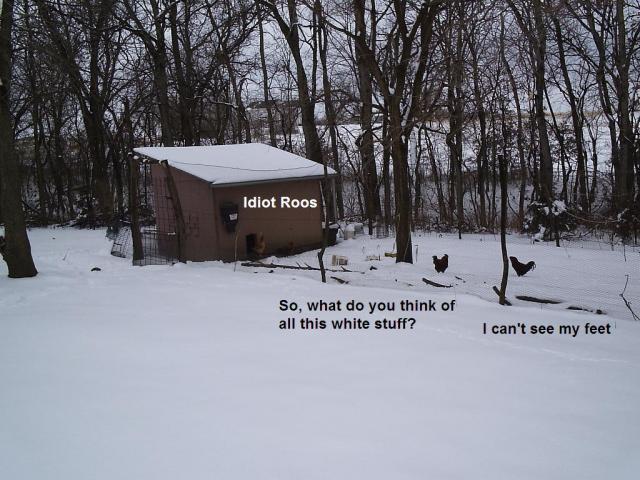- Jul 10, 2009
- 2,173
- 79
- 299
On the recent really cold snowy days, I give an extra scoop of scratch into the coop and leave them shut up. They don't like to come out in the snow anyway. I checked the thermometer I have hanging in the coop, it was 15 degrees outside, but 35 degrees inside when the sun was shining. I have my Coop on a foundation with a sub-ground level dirt floor and deep litter up to 18 inches deep. I don't have electricity or water run to the coop, they have been doing fine during the winter for a couple decades now. The Coop is situated such that the winter sun will shine into the south and west windows. During the summer, the whole Coop is shaded by deciduous trees. (See my BYC page for pics of the Coop/Run setup)

This pic is a couple years old, before I enlarged the run.

This pic is a couple years old, before I enlarged the run.




